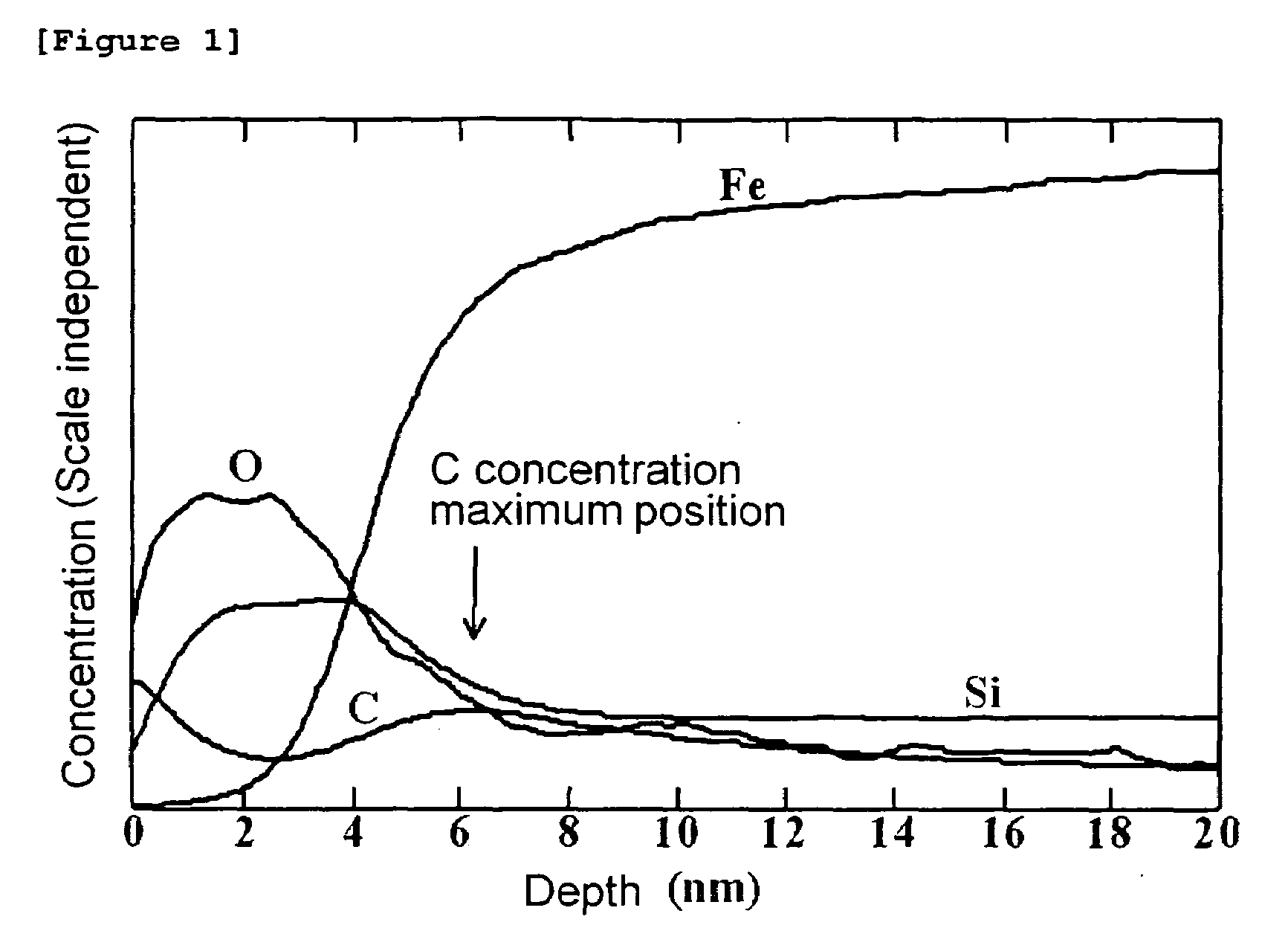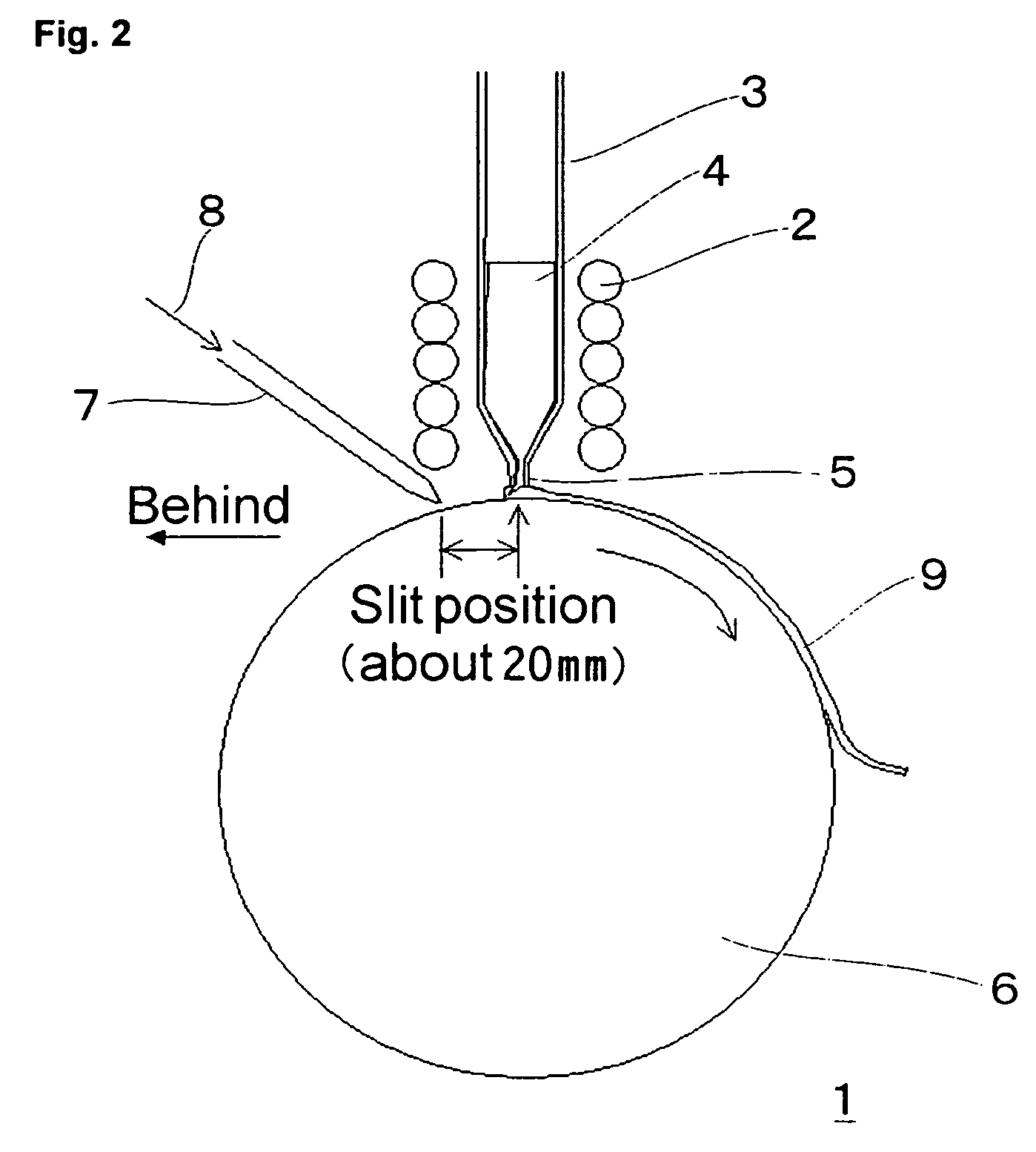Amorphous Alloy Ribbon, Nanocrystalline Soft Magnetic Alloy and Magnetic Core Consisting of Nanocrystalline Soft Magnetic Alloy
- Summary
- Abstract
- Description
- Claims
- Application Information
AI Technical Summary
Benefits of technology
Problems solved by technology
Method used
Image
Examples
embodiment 1
[0027]As an example of the present invention, the amorphous alloy ribbon was produced by injecting the alloy melting heated at 1300° C. of the alloy composition Febal.Cu0.9Mo3Si15.5B7.5C0.1 (atomic %) on the water cooled Cu—Cr alloy roll with an outer diameter of 400 mm rotating on the circumferential speed 30 m / s. By casting with spraying CO2 gas heated at 100° C. from a gas nozzle on Cu alloy roll from the position of about 20 mm back from the slit position of the nozzle injecting the melting, C segregation layer was formed in 2-20 nm from the surface. CO2 gas concentration around the roll surface of the nozzle tip part was 35%. The produced amorphous alloy ribbon is 50 mm in width and 20 μm in thickness. FIG. 2 is a pattern section figure of this production apparatus. In amorphous alloy ribbon production apparatus 1, alloy melting 4 heated to the aforementioned temperature in nozzle 3 with the high frequency dielectric heating by high frequency coil 2 passes through slit 5 and th...
embodiment 2
[0028]As the example of the present invention examples (No. 1-33), and the comparative examples (No. 34-36), the alloy melting heated at 1300° C. of each composition shown in Table 2 was injected on the water cooled Cu—Be alloy roll with an outer diameter of 400 mm rotating at a circumferential speed 32 m / s, and the amorphous alloy ribbon was produced. By burning CO gas and casting with the flame on Cu alloy roll of about 30 mm behind from the slit position of the nozzle injecting the melting, C segregation layer was formed in 2-20 nm from the surface. CO2 gas concentration around the roll surface of the nozzle tip part was 42%. The produced alloy ribbon is 70 mm in width and 18 μm in thickness. As a result of the X-ray diffraction, it was confirmed that an alloy ribbon was in an amorphous state. Surface depth direction element concentration analysis from the roll face (surface in contact with a roll) of the produced sample was conducted in GD-OES (glow discharge luminescence surfac...
PUM
| Property | Measurement | Unit |
|---|---|---|
| Fraction | aaaaa | aaaaa |
| Percent by atom | aaaaa | aaaaa |
| Nanoscale particle size | aaaaa | aaaaa |
Abstract
Description
Claims
Application Information
 Login to View More
Login to View More - R&D
- Intellectual Property
- Life Sciences
- Materials
- Tech Scout
- Unparalleled Data Quality
- Higher Quality Content
- 60% Fewer Hallucinations
Browse by: Latest US Patents, China's latest patents, Technical Efficacy Thesaurus, Application Domain, Technology Topic, Popular Technical Reports.
© 2025 PatSnap. All rights reserved.Legal|Privacy policy|Modern Slavery Act Transparency Statement|Sitemap|About US| Contact US: help@patsnap.com


